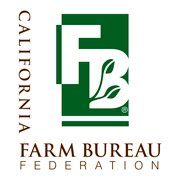May 27, 2021California farm groups seek review of order on fertilizer use
Saying new regional regulations will have a profound impact on food production, farm organizations have petitioned the California State Water Resources Control Board to review a regional board’s order limiting applications of fertilizer and other inputs on Central Coast crops.
The California Farm Bureau and seven county Farm Bureaus joined five other agricultural organizations in filing the petition, which focuses on an order adopted April 15 by the Central Coast Regional Water Quality Control Board.


The order creates new monitoring and reporting requirements for nitrogen applications and removals, and lays out several paths to compliance, including one using third-party programs to help farmers achieve the order’s objectives.
California Farm Bureau Counsel Kari Fisher signed the petition on behalf of the state Farm Bureau and county Farm Bureaus in Monterey, San Benito, San Luis Obispo, San Mateo, Santa Barbara, Santa Clara and Santa Cruz counties, where the order is in effect. Other petitioners include the California Strawberry Commission; Western Growers; the Grower-Shipper Associations of Central California and of Santa Barbara and San Luis Obispo counties; and the Western Plant Health Association.
“No other regional board has ever regulated the application of fertilizer,” Fisher said, referring to the Central Coast board’s enforceable limits on the amount of nitrogen fertilizer farmers can apply to crops.
The farm groups’ petition says the regional water board veered out of its lane in seeking to regulate nitrogen applications. Fisher said the regulation of fertilizers and pesticides falls under the jurisdiction of the California Department of Food and Agriculture and Department of Pesticide Regulation.
In considering a similar order for nitrogen use in the East San Joaquin watershed, Fisher said the state water board specifically said that “the science is not there yet to have an enforceable limit.”
The Central Coast order also includes a requirement that domestic wells be tested for 1,2,3-trichloropropane because of passive migration into groundwater.
Fisher said 1,2,3-TCP, a fumigant, has not been used in decades, but the order requires farmers to test for it and report detections, and to find alternative sources of drinking water when it’s detected in a well.
“This is a big deal, because of the fact that a farmer or rancher is not actually utilizing or applying 1,2,3-TCP to their fields,” she said.
The petition asks the state water board to review the order and its associated final environmental impact report. It asks the water board to include a “true and viable” third-party compliance alternative; remove nitrogen application limits and targets; remove nitrogen discharge limits and replace them with realistic targets triggering appropriate follow-up; better define when farms with impermeable surfaces must manage stormwater discharge duration, rate and volume; and encourage but not require TCP monitoring in wells.
The farm groups described the final EIR as flawed because it failed to analyze the order’s environmental or economic impacts; did not identify or analyze alternatives; did not support its conclusions with substantial evidence; and failed to respond to public comments.
In the meantime, Fisher said, Ag Order 4.0 remains in force, and farmers must act accordingly.
Norm Groot, executive director of the Monterey County Farm Bureau, said that will be a tall order.
“This is a very complex set of compliance requirements that cannot be summarized into a one-page primer for growers,” Groot said. “There will need to be extensive education on the requirements for applied and removed nitrogen, irrigation water use, and monitoring and reporting requirements that must be met annually.”
Among other challenges, he said, most calculations for nitrogen use will need the help of certified crop advisors or other experts to help farmers determine annual compliance reporting. He said increasingly lower limits on nitrogen applications “will force hard choices on production of some crops, either as multiple crops each year, or nitrogen application limits that just cannot produce a marketable crop.”
Richard Smith, a University of California Cooperative Extension farm advisor in Salinas, said farmers have a steep learning curve ahead.
“There’s never been nitrogen limits before,” he said. “There’s been nitrogen reporting, but this is a new ballgame now.”
In a lengthy blog post, Smith and fellow UCCE advisor Michael Cahn discussed three key steps farmers will need to take to comply with the order, beginning with measuring residual nitrogen in the soil using a nitrate quick test. (The full post can be seen on the Salinas Valley Agriculture blog: ucanr.edu/blogs/SalinasValleyAgriculture.)
“If there is residual nitrogen, then you just either supplement it, or you can skip a fertilization, depending on the level,” Smith said. “Then there is accounting for the nitrate in the water and taking advantage of that. Then there is irrigation management—trying to keep the nitrogen in the soil, in the root zone.”
Nitrogen management “takes a lot of testing, and it takes a lot of recalibrating your knowledge base,” he added. “How to grow the crop and reduce nitrate leaching, that’s the new frontier.”
Calculating just the amount of nitrogen a crop needs can be hard to do, Smith said, “because the fields are not uniform,” which makes the rules “very difficult to fully comply with.”
Ideally, he said, cover crops could be used at the end of the season to soak up residual nitrogen.
Smith invited farmers needing help or advice to contact his office; contact information is available here.
– Kevin Hecteman, California Farm Bureau














